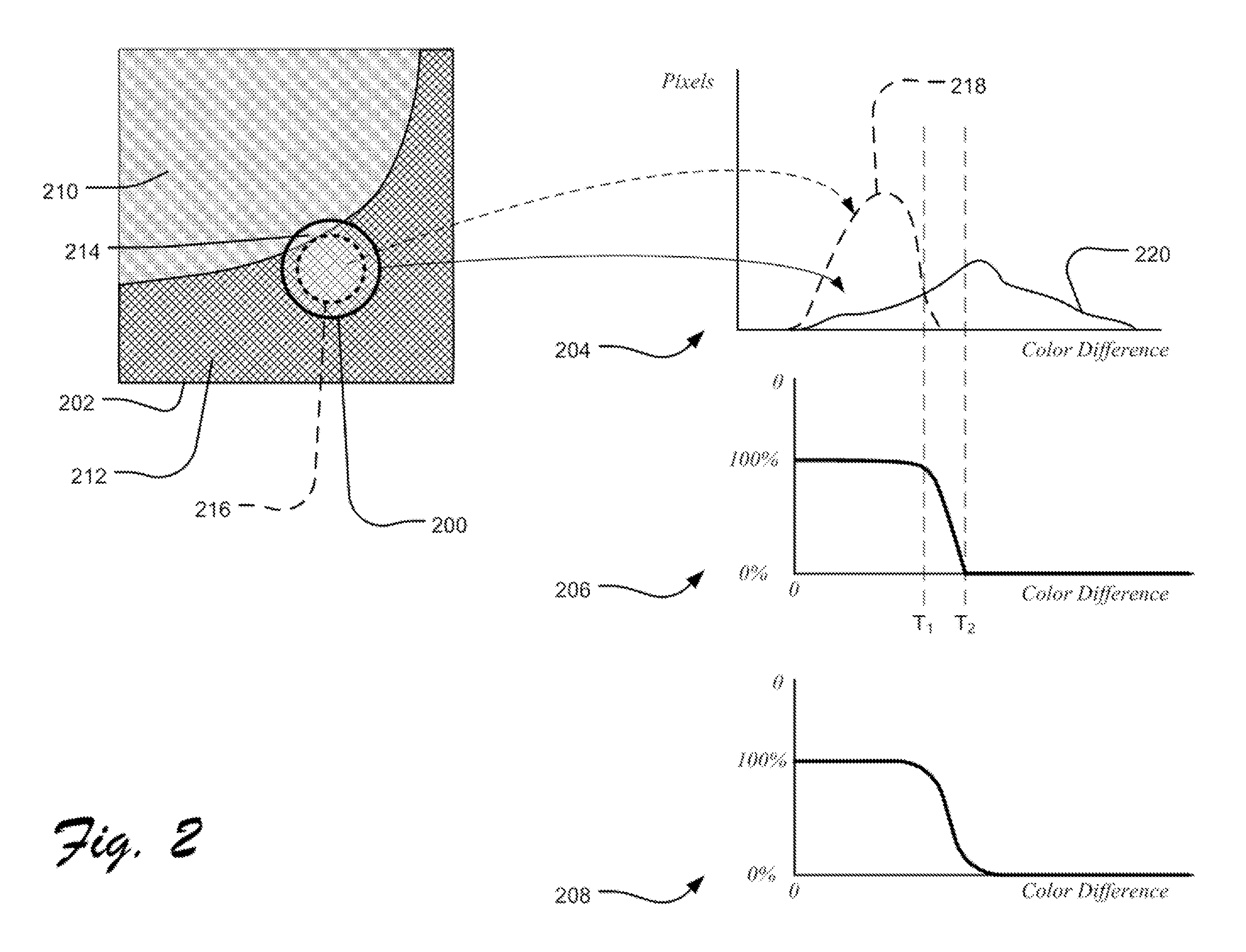Adaptive Sampling Region for a Region Editing Tool
a region editing and adaptive sampling technology, applied in the field of image editing, can solve the problems of difficult to determine the appropriate color and translucence of each pixel on the boundary between the subject and the background, the approach is tedious and very time-consuming, and the task is too complex or too time-consuming for many users to perform with acceptable,
- Summary
- Abstract
- Description
- Claims
- Application Information
AI Technical Summary
Problems solved by technology
Method used
Image
Examples
Embodiment Construction
[0032]An exemplary adaptive region editing tool samples one or more properties (e.g., colors, texture) of pixels in a digital image within different subdivisions of an editing tool impression to produce different property distributions. Generally, an editing tool combines an image region designation, typically via a user interface, and an editing operation. In one implementation, the image region designation (e.g., a tool impression) can be automatically altered based on image region content within the region. Aon editing brush or wand represents an exemplary editing tool. The property distributions from each region are analyzed to identify different edit classes within the property space. The different edit classes are then used to apply an edit effect to the digital image within the tool impression (e.g., modifying hue property values of individual pixels, replacing one color with another, erasing pixels having a given color or being within a given color range, etc.). The edit cla...
PUM
 Login to View More
Login to View More Abstract
Description
Claims
Application Information
 Login to View More
Login to View More - R&D
- Intellectual Property
- Life Sciences
- Materials
- Tech Scout
- Unparalleled Data Quality
- Higher Quality Content
- 60% Fewer Hallucinations
Browse by: Latest US Patents, China's latest patents, Technical Efficacy Thesaurus, Application Domain, Technology Topic, Popular Technical Reports.
© 2025 PatSnap. All rights reserved.Legal|Privacy policy|Modern Slavery Act Transparency Statement|Sitemap|About US| Contact US: help@patsnap.com



